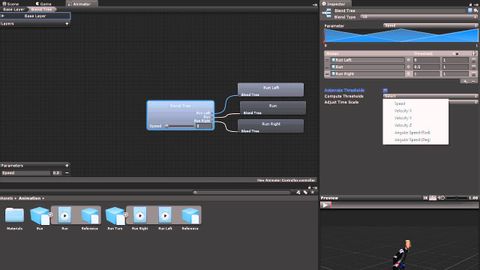
Subtitles & vocabulary
Blend Trees - Unity Official Tutorials
00
朱瑛 posted on 2014/05/02Save
Video vocabulary
state
US /stet/
・
UK /steɪt/
- Noun (Countable/Uncountable)
- Region within a country, with its own government
- Situation or condition something is in
- Adjective
- Concerning region within a country
A1TOEIC
More represent
US /ˌrɛprɪˈzɛnt/
・
UK /ˌreprɪ'zent/
- Transitive Verb
- To depict art objects, figures, scenes; to portray
- To show or describe something in a particular way
A2TOEIC
More left
US /lɛft/
・
UK /left/
- Verb (Transitive/Intransitive)
- To go away from; depart
- To gift property to someone after you die
- Noun
- Side of your body your heart is on
A1
More property
US /ˈprɑpəti/
・
UK /'prɒpətɪ/
- Noun (Countable/Uncountable)
- Particular quality that someone or something has
- Buildings or piece of land owned by someone
A2TOEIC
More Use Energy
Unlock All Vocabulary
Unlock pronunciation, explanations, and filters
